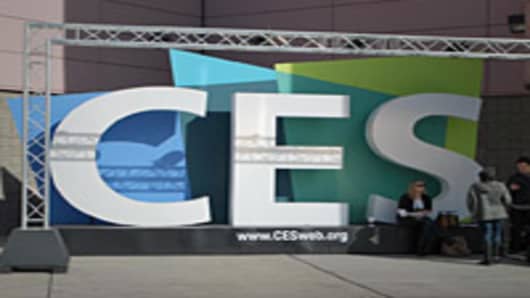Mobile
This year's CES opening keynote billing says it all: Paul Jacobs, the CEO of Qualcomm, isn't a PC guy like previous keynoter Steve Ballmer. He's a wireless and mobile guy. And CES is becoming—by accident, almost—a wireless and mobile show.
I remember the first CES I covered, more than a decade ago. Bill Gates was keynoting, WiFi wasn't mainstream yet, and Microsoft was this feared behemoth that was going to extend its PC dominance into everything. (Gates introduced the PC-inspired Xbox that year.) That was the high point for the PC's ambitions for expansion. (Read More: Microsoft Acquires Start-Up id8: Source)
Windows in the car never took off. Ditto for Windows in the TV and Windows on the cell phone.
Now the mobile giants are making a very viable run at the same goal. The soul of the smartphone has already invaded the PC's turf in the form of a tablet; I think we can all agree now that tablets are cannibalizing PC sales.
Smartphones and tablets have disrupted the game console through wireless connections and apps that allow them to become networked game consoles. Both devices are displacing music players, digital cameras, camcorders and alarm clocks. The next frontiers will be televisions and cars. (Read More:Apple Testing New iPhone, iOS 7: Report)
I wouldn't bet on hearing much about TVs or cars during Jacobs's keynote; I expect him to talk broadly about how smartphones are changing the world and how Qualcomm's newest Snapdragon chip will extend its lead in smartphones, and grow its share in tablets and PCs. But walk the show floor and there will be no mistake— some of the most impressive gadgets, from stereo equipment to car alarm systems to remote controlled helicopters and robots will all be linked to smartphone apps.
Television
Which brings us to televisions. TVs are always the stars of CES; all the biggest booths are dominated by hulking sets that the mega-brands use like wallpaper. Early in the show the TV brands show off their largest panels (they're topping 90 inches on LED TVs these days).
This year in particular though, much of the TV business is also facing a crisis. It's been commoditized.
Take a look at the holiday season stats. TV sets 60 inches and larger saw their sales jump 10 times over their 2010 levels on Black Friday, driven by lower prices, according to research firm NPD. That might seem like good news, except overall flat-panel TV revenue was down six percent from last year. Customers are mainly buying the cheapest TV they can get for the money.
That's the challenge for a company like Sony, where new CEO Kaz Hirai is trying to stabilize the TV division's massive losses and turn around the company. That's why Sony has been pushing new technologies like 3D, which has never caught on as a demand-driver for shoppers, and 4K— a new HD format that delivers four times the resolution of today's best-known HD option, 1080p.
Will consumers buy 4K? It seems unlikely in the near-term. It can be hard enough to find content on cable that takes full advantage of 1080p resolution—there's none available in 4K. That means consumers have to invest in upgrading their Blu-Ray disc collection to content that can play on 4K.
One way Sony is trying to ease the pain of converting to an entirely new media format is by giving its customers access to 4K content.
Buyers of Sony's 84-inch 4K set, which costs a cool $25,000, get a loaner server stocked with 10 Sony movies in 4K format.
What might have a better chance of selling TVs is software— though that hasn't caught on in a big way, either. Google continues to push its Google TV software, which seeks to make it easier for TV viewers to stream and schedule programming. Intel is rumored to be working on a new set-top box and service that would deliver on-demand programming; and of course, Apple is looking for ways to turn its TV hobby into a bigger play. (Read More: What Apple TV Will Do to Stock: Munster)
This year we're likely to hear a lot more from Google TV partners hoping the software finally catches on.





